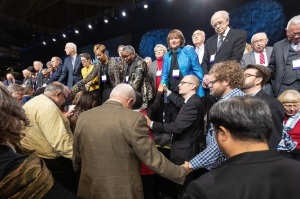Hubble and the Celestial Fireworks: NASA Space Telescope Spots Rare Tadpole Galaxy that Resembles July 4th Fireworks
Tadpole Galaxy is a Rare Event Where Numerous Stars are "Born"
NASA's Hubble Space Telescope captured a tadpole galaxy near Milky Way. The star birth event is considered to be rare and astronomers noted that the Kiso 5639 dwarf galaxy was near enough to be observed.
Interesting Discoveries
In a press release, Hubble released images of the tadpole galaxy with its bright head and long tail clustered with millions of stars. Tadpole galaxies are supposedly rare as they only commonly occur in the early universe or before the modern time.
Astronomers note that about 10 percent of the galaxies in the universe are defined as tadpoles. The nearest one similar to Kiso 5639 is the LEDA 36252.
However, researchers were surprised to discover that the head of the tadpole galaxy contained younger stars with a total mass of around 10,000 suns. The tail of the galaxy contained older stars. The researchers believe that the formation of the galaxy was caused by the eruption of primordial gas from space. It was previously believed that the head of tadpole galaxies were formed via colliding with other galaxies.
Kiso 5639, galaxies are still relatively continuing to form. The details of the findings are published in The Astrophysical Journal.
Kiso 5639 Tadpole Galaxy Resembles July 4th Fireworks
The Kiso 5639, located 82 million lightyears away, was observed by Hubble using the Grand Canary Telescope. Lead researcher Debra Elmegreen from Vassar College in New York, and colleagues observed that the galaxy is composed mainly of pure gas. The tadpole head does not contain as much carbon and oxygen, but mainly of helium and hydrogen, according to the study.
Furthermore, the researchers have found that the tadpole galaxy was created unusually longer due to the fact that it traversed in an area in space where there isn't much gas. The birth of stars was caused by the leading edge of the gas encountering a filament of gas. There was matter in the filament, which believed to have triggered it. It is expected that Kiso 5639 to spur another starburst as it continues to spin. During its course, it may get another round of gas from the filament.
Do you think that Hubble researchers will have another chance to observe star births via Kiso 5639?




























